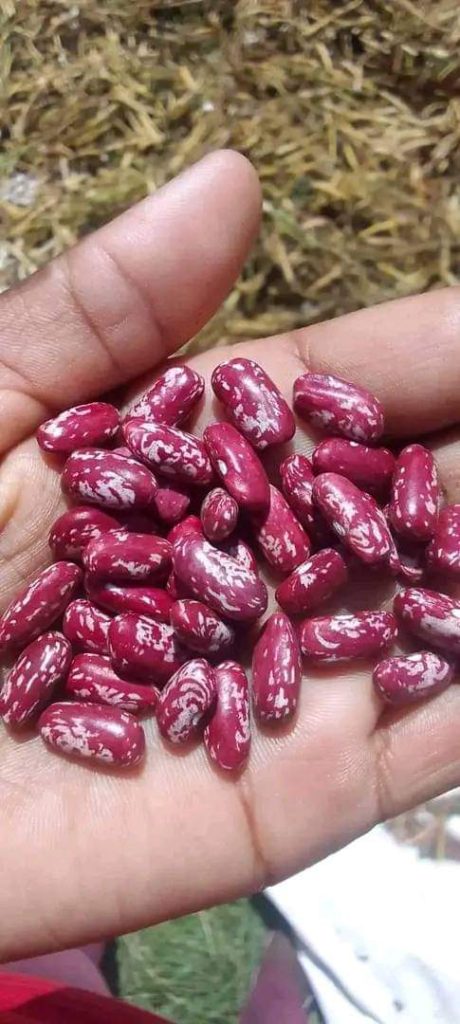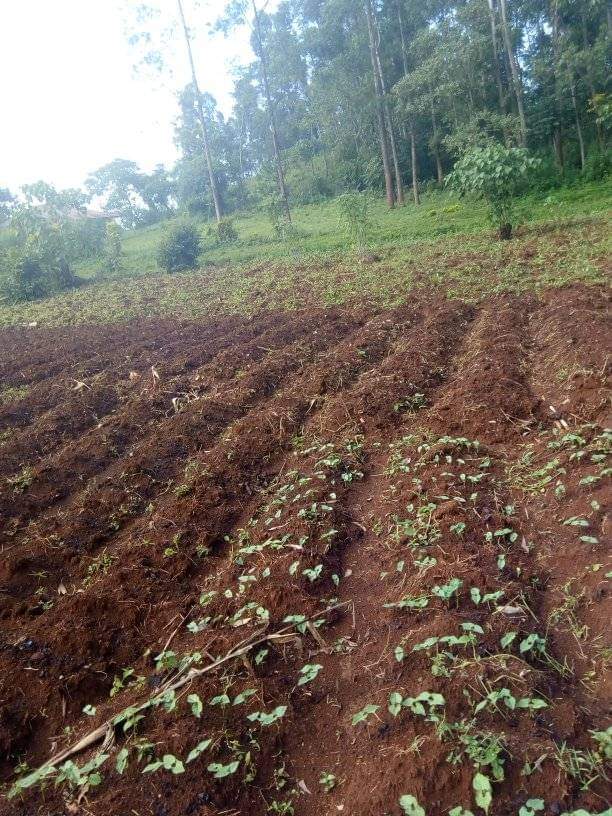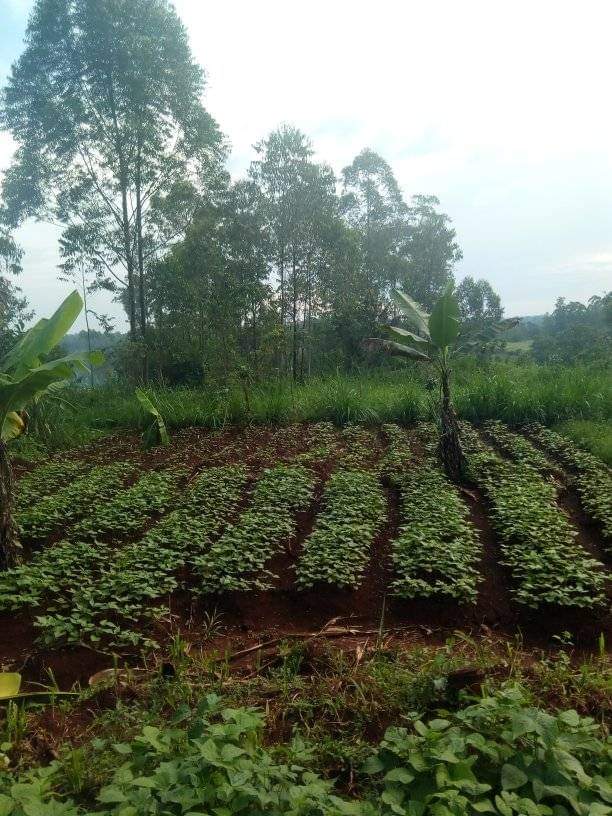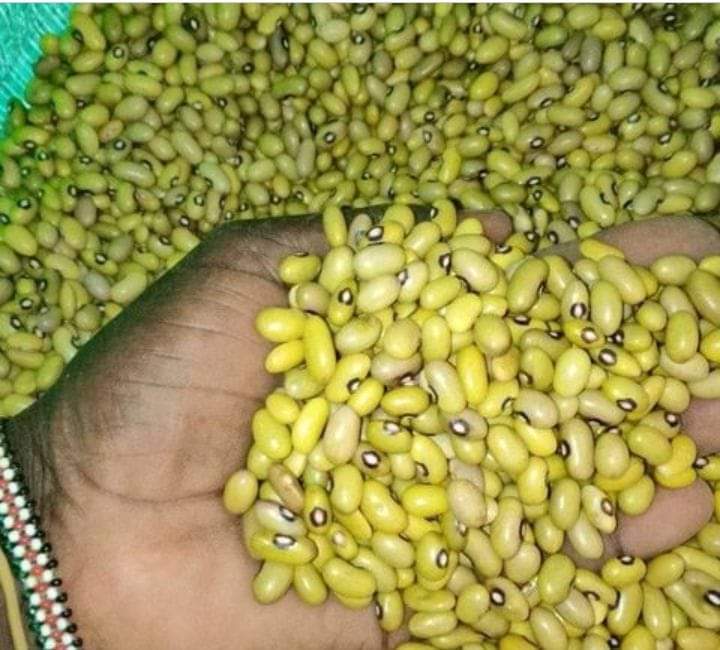- Bean (Phaseolus vulgaris) Significance in Kenya:
- Considered one of the most crucial legumes globally, providing essential nutrients.
- Second most significant staple food crop in Kenya, following maize.
- Grown across various regions, with major cultivation in Eastern, Nyanza, Central, Western, and Rift Valley provinces.
- Bean Farming Practices:
- Requires minimal care and enriches soil with nitrogen.
- Second most vital food crop production after maize.
- Primary source of affordable protein in Kenya.
- Average yield of 10 bags per acre depending on the variety.
- Regional Distribution:
- Predominantly practiced in Central, Western, Nyanza, Eastern, and some parts of Western Kenya.
- Production Statistics:
- Kenya produced over 780,000 metric tonnes of beans in 2022.
- Challenges Faced:
- Low soil fertility and moisture stress due to climate change.
- Lack of comprehensive market information.
- Inadequate seed dissemination systems.
- Poor cultural practices affecting yield.
- Technological Solutions:
- Research bodies like Kenya Agricultural Livestock Organization (KARLO) and National Agriculture Research Systems (NARS) have developed technologies.
- These technologies aim to address challenges and assist farmers in making informed decisions.
- Low Adaptation Rate:
- Despite available technologies, adoption remains low.
- Mainly attributed to insufficient dissemination of information to farmers.
Beans Farming in Kenya Varieties

- Mwitemania Variety:
- Oldest drought-tolerant variety.
- Flowers in 30 days with pink and white flowers.
- Matures in 70-90 days with a yield potential of 5-7 bags/acre.
- KATX56:
- Kidney-shaped beans.
- Height of around 35 cm.
- Flowers within 30-35 days.
- Matures in 60-65 days with a yield potential of 7-10 bags/acre.
- Tolerant to diseases such as rust, charcoal rot, and mosaic virus.
- Good cooking qualities.
- Katumani {KAT-B1}:
- Suitable for hot climatic conditions.
- Flowers in 30 days with light pink flowers.
- Sweet grain taste.
- Average yield of 7-9 bags/acre.
- Katumani {KAT B9} – Gacuma:
- Flowers in 30-40 days with light pink flowers.
- Matures in 60-65 days.
- More drought-tolerant than KAT-B1.
- Yield potential of 7-9 bags/acre.
- Gives an Irish brown color when cooked with maize.
- Katumani X-56 {KAT X-56}:
- Fast-cooking variety.
- Flowers in 30-35 days with light pink flowers.
- Matures in 60 days with dark red grains.
- Average yield of 7-10 bags/acre.
- Can out-yield KAT B9 and B1 under optimal conditions.
- KATX69:
- Red-mottled beans.
- Flowers in 30-35 days with white flowers.
- Matures in 60-65 days.
- Elliptic kidney shape.
- Yield potential of 7-10 bags/acre.
- Tolerant to various diseases such as mosaic virus, charcoal rot, and angular leaf spot.
- Miezi Mbili:
- Bushy variety from Simlaw Seed Company.
- Pink flowers after 35-46 days.
- Yield of 6-7 bags with a seed rate of 30kg/acre.
- Tolerant to diseases such as halo blight, angular leaf spot, floury leaf spot, and anthracnose.
- Climbing Beans:
- Ideal for limited land sizes and irrigation.
- Good source of green beans, recommended for breastfeeding women.
- Varieties include Kenya Mavuno and Kenya Tamu.
- Kenya Mavuno:
- White flowers after 40-70 days.
- Rectangular and elliptic beans.
- Matures after 110-150 days with a yield potential of 9-14 bags/acre.
- Seed rate: 30kg/acre.
- Kenya Tamu:
- Flowers after 40-60 days.
- Matures after 110-135 days with a yield potential of 9-14 bags/acre.
- Ideal for farmers with small land sizes.
Ecological Requirements
- Soil Requirements:
- Thrives in well-drained soil rich in organic matter.
- Weed-free soil with optimum pH of 6.5 – 7.5.
- Growth is hindered in waterlogged soils.
- Altitude:
- Optimum altitude range: 1000-2100 meters above sea level (ASL).
- Faster growth and maturation in low altitude zones.
- Rainfall:
- Suitable annual rainfall: 800-2000mm, distributed evenly.
- Irrigation required in case of inadequate rainfall.
- Excessive rainfall or prolonged dry spells reduce yields.
- Too much rain during flowering leads to flower abortion and increased disease incidences.
- Dry weather needed during harvesting.
- Temperature:
- Thrives in temperatures ranging from 15-33 degrees Celsius.
- Optimal growing temperature: 20-25 degrees Celsius.
- Relatively high temperatures affect flowering and pod setting.
- Very sensitive to frost.
Planting

- Propagation:
- Propagated by seeds.
- Recommended to use certified or disease-free seeds.
- Avoid planting wrinkled, damaged, or diseased seeds.
- Planting Time and Conditions:
- Plant at the onset of the rains for rain-fed production.
- Delay in sowing may result in crop failure or reduced yield.
- Planting Spacing and Depth:
- Plant seeds at spacing of 4015cm (2 seeds per hill) or 3015cm (1 seed per hill).
- Plant seeds at a depth of 1-2 inches.
- Intercropping:
- Beans can be intercropped with other crops like maize.
- Germination:
- Seeds typically germinate within 4-7 days, influenced by variety and environmental factors.
- Important Note:
- Avoid planting beans in soil with excessively high nitrogen levels or where green manure crops were previously grown.
- High nitrogen levels can result in lush foliage but fewer beans.
Beans Farming in Kenya Common Pests and Diseases
Pests:
- Cutworms:
- Description: Brown or black caterpillars found in soil, cutting stems of younger plants.
- Management:
- Dress seeds with SHIELD 600FS at 3 ml/kg.
- Drench soil with PROFILE 440EC at 3 ml/l.
- Bean fly:
- Description: Larvae tunnel into plant stems, damaging vascular tissue.
- Management:
- Dress seeds with SHIELD 600FS at 3 ml/kg.
- Drench soil with PROFILE 440EC at 3 ml/l.
- Spray LEXUS 247SC at 8 ml/20l to kill adults.
- Red spider mites:
- Description: Tiny reddish-yellow pests on undersides of leaves, causing yellow stippling and web formation.
- Management:
- Spray ALONZE 50EC at 5 ml/20l.
- Aphids:
- Description: Soft-bodied, sap-sucking insects causing leaf curling and sooty mold.
- Management:
- Spray LEXUS 247SC at 8 ml/20l.
- Spray JAMBO CLEAN at 5 ml/l to eliminate sooty mold.
- Leaf miners:
- Description: Larvae mine under leaf surface, forming trails.
- Management:
- Spray ALONZE 50EC at 3 ml/20l.
- Pod borer:
- Description: Feeds on leaves, flowers, and pods, bore holes and damage seeds.
- Management:
- Spray PENTAGON 50EC at 10 ml/20l.
- Whiteflies:
- Description: White insects sucking plant sap, causing leaf curling and sooty mold.
- Management:
- Spray PROFILE 440EC at 1.5 ml/l.
- Spray JAMBO CLEAN at 100ml/20l for sooty mold.
- Thrips:
- Description: Suck sap from leaves and flowers, leading to abortion and leaf fall.
- Management:
- Spray ALONZE 50EC at 5 ml/20l or PROFILE 440EC at 30ml/20l.
Diseases:
- Bean rust:
- Description: Causes reddish-brown pustules on leaves, pods, and stems.
- Management:
- Spray DUCASSE 250EW at 1 ml/l or RANSOM 600WP at 15 g/20l.
- Downy mildew:
- Description: Whitish or grey fungal growth on leaf undersides, chlorotic upper leaf surface.
- Management:
- Spray GEARLOCK TURBO 250WP at 25 g/20l.
- Anthracnose:
- Description: Brown to black sunken lesions on pods, stems, and seeds.
- Management:
- Spray RANSOM 600WP at 15 g/20l or ABSOLUTE 375SC at 10 ml/20l.
- Bacterial blight:
- Description: Small brown blotches on leaves, leading to leaf fall and plant death.
- Management:
- Spray GREEN COP 500WP at 50g/20l.
- Fusarium wilt:
- Description: Sudden yellowing of leaves, wilting, and discoloration of vascular tissue.
- Management:
- Drench soil with GREENCOP 500WP at 5 g/l or TRINITY GOLD 425 WP at 2.5 g/l.
Fertilizer Application

Nutrient Management:
- Planting Stage:
- Apply Phosphorous-rich fertilizer during planting.
- Consider adding manure based on soil organic matter.
- Mix fertilizer/manure with HUMIPOWER at a rate of 1 kg Humipower per 1 ton of manure or 50 kg basal fertilizer to improve nutrient uptake and stimulate plant growth.
- Top Dressing (4-5 Weeks After Germination):
- Use CAN or basal fertilizer rich in Calcium, Boron, and Nitrates.
- Mix with HUMIPOWER at a rate of 1 kg per 50 kg of basal fertilizer.
- Supplementation:
- Supplement basal fertilizers with foliar fertilizers for a wide range of vital nutrient elements.
Foliar Feeds:
- OPTIMIZER (10 ml/20l):
- Functions as a stress manager, boosts plant immunity, prevents flower abortion, and provides essential macro and micronutrients.
- Can be sprayed at any stage of crop development.
- GOLDCHANCE SERIES (50g/20l):
- Goldchance Super Start: For early crop development.
- Goldchance Super Flowers & Fruits: For flowering and fruiting/pod development stages.
Weed Control:
- Weeding:
- Essential to avoid losses due to weed competition and harboring pests and diseases.
- CATAPULT 480SL (10-15 ml/l): Kills all types of weeds during land preparation or just before germination.
- BENTAGRAN TOP® 240EC (2.5 ml/l): Post-emergent herbicide for controlling annual weeds in bean fields.
- Weeding before flowering is crucial.
Beans Farming in Kenya Challenges
- Climate Change:
- Disrupted planting patterns, making it challenging for farmers to determine the optimal planting time.
- Low or insufficient rainfall due to climate change affecting yields.
- Lack of Adequate Information on Seed Varieties:
- Farmers lack sufficient information on suitable seed varieties for their local areas.
- Planting unsuitable seed varieties results in reduced yields and susceptibility to diseases.
- Pests and Diseases:
- Common diseases include bean root rot disease, particularly affecting farms in areas like Kitale.
- Pests such as the stem maggot attack plants within the first three weeks after germination, causing swollen stems and yellowing leaves.
- Unfair Competition from Imported Beans:
- Imported beans from countries with lower production costs pose unfair competition.
- Some governments offer subsidies for agricultural inputs, reducing production costs, unlike in Kenya.
- The use of organic fertilizer can help lower production costs and increase return on investment for Kenyan bean farmers.
Harvesting

- Timing:
- Depending on varieties, beans are ready for harvesting 70-120 days after sowing.
- Some varieties have shorter maturity periods.
- Plants are mature when leaves turn yellowish to brown or fall off.
- Harvesting Methods:
- Beans can be harvested green or when dry.
- For dry harvesting:
- Pods are harvested when completely dry.
- If pods have withered but are still moist, they can be picked and sun-dried.
- Plants can be uprooted if most pods are ready for harvesting.
- Timing is crucial as pods that are completely dry split open, exposing dried beans.
Storage:
- Dry Beans:
- Stored in treated gunny or PICS bags to prevent damage by storage pests.
- Incorporate seeds with an insecticide like Actellic Super to prevent pest damage while in storage.
- Bags should be placed on pallets, not directly on the floor.
- Green Beans:
- Can be refrigerated for 8-10 days.
- Dried Beans:
- Can be stored in a cool, dry place for up to a year or more.

